
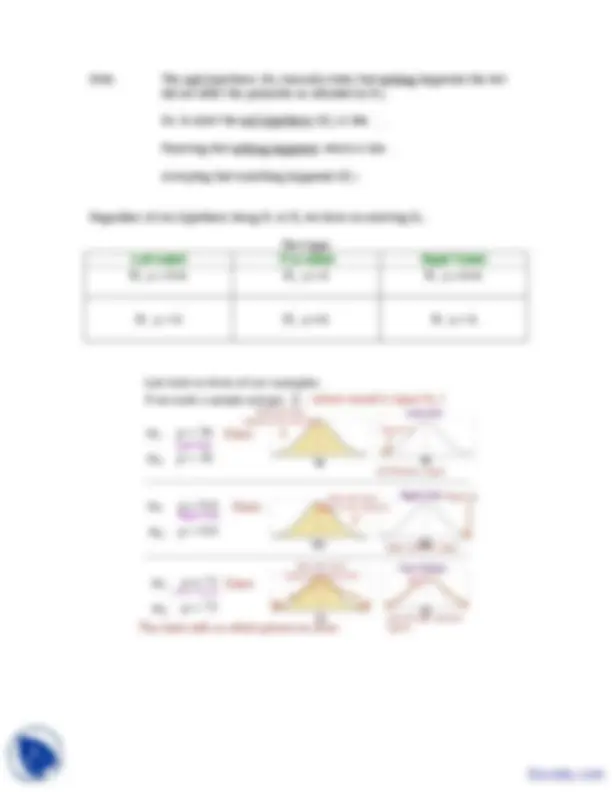
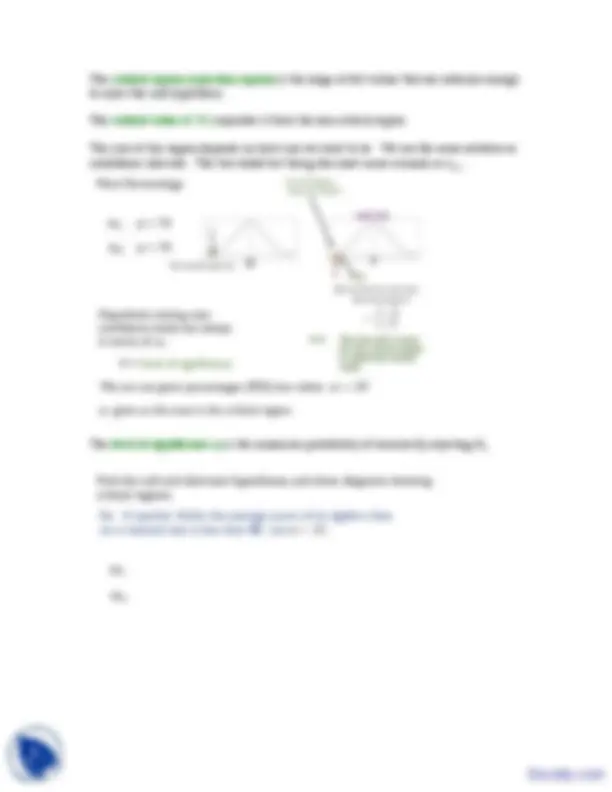

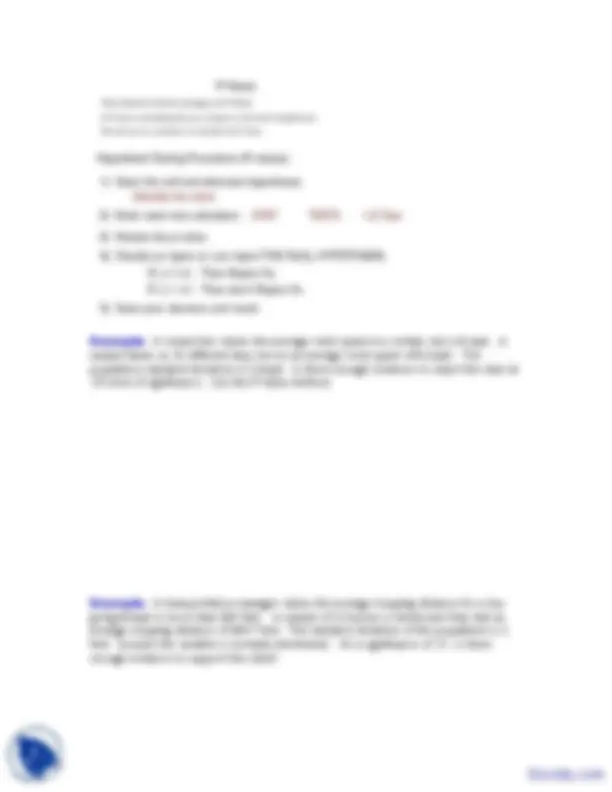
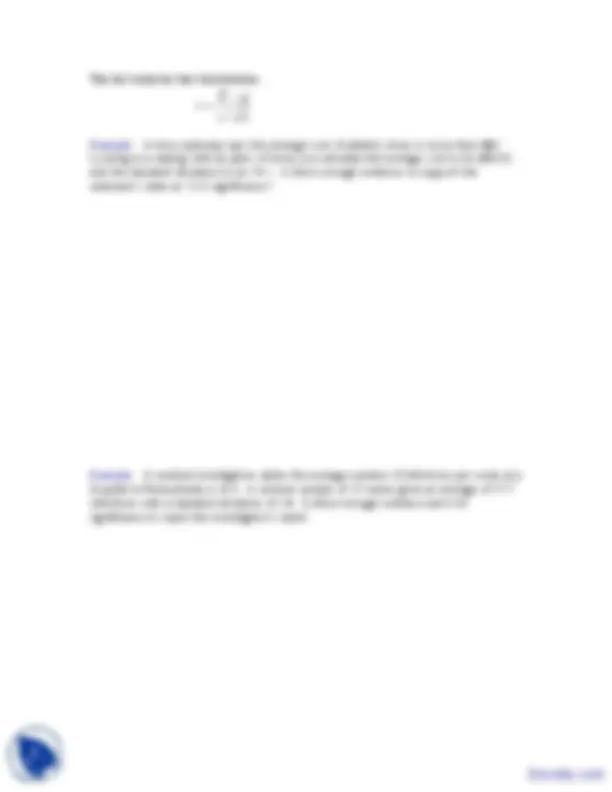
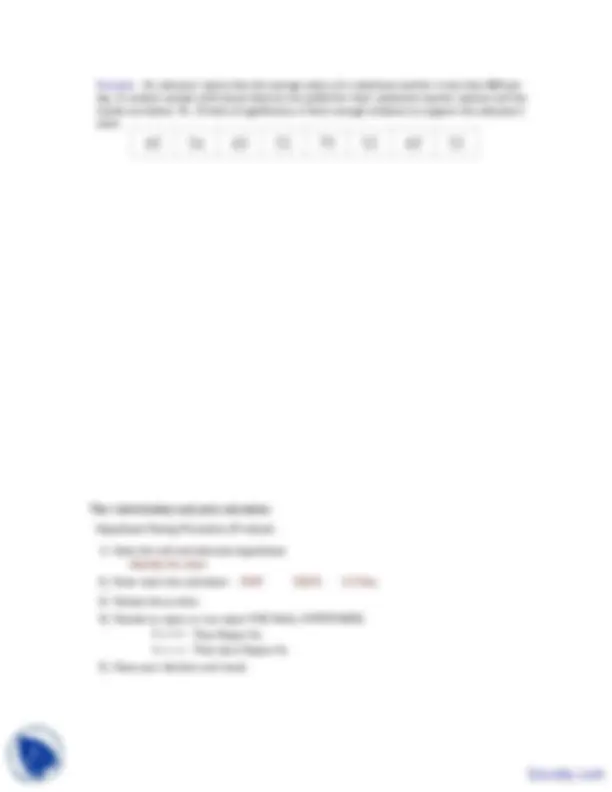
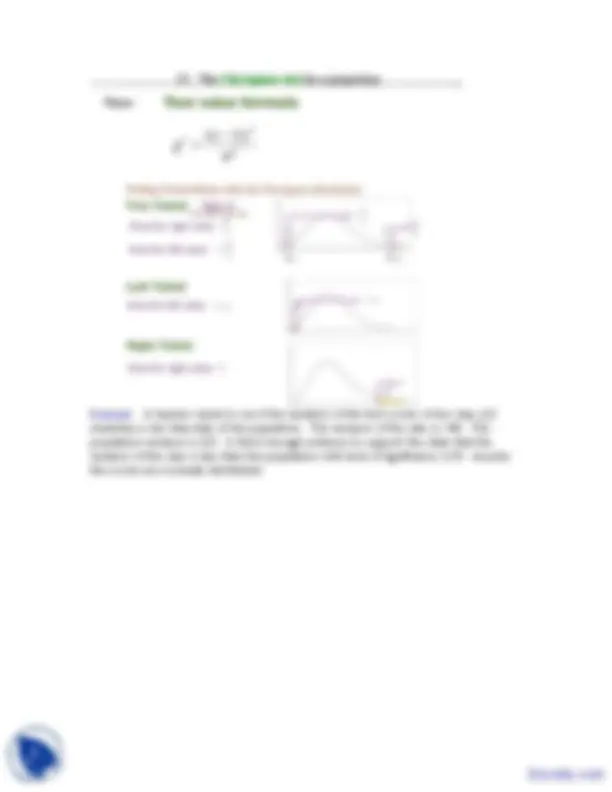
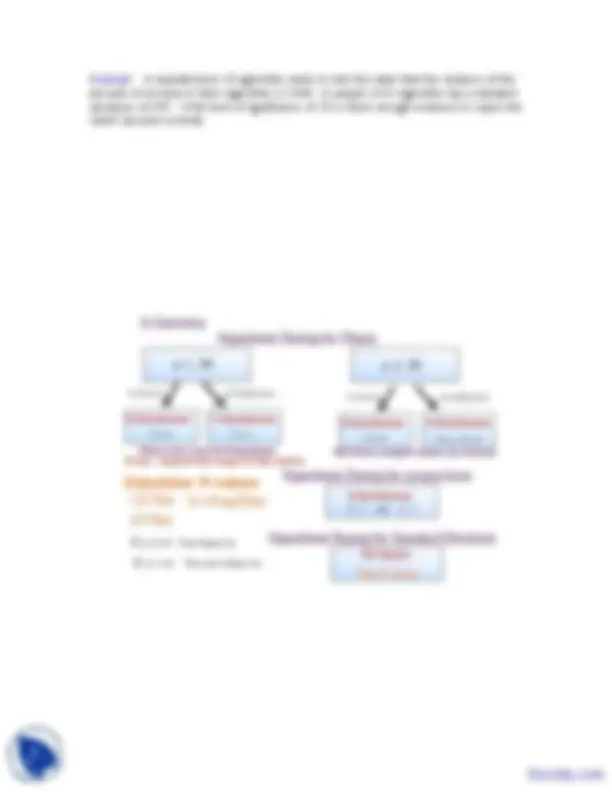
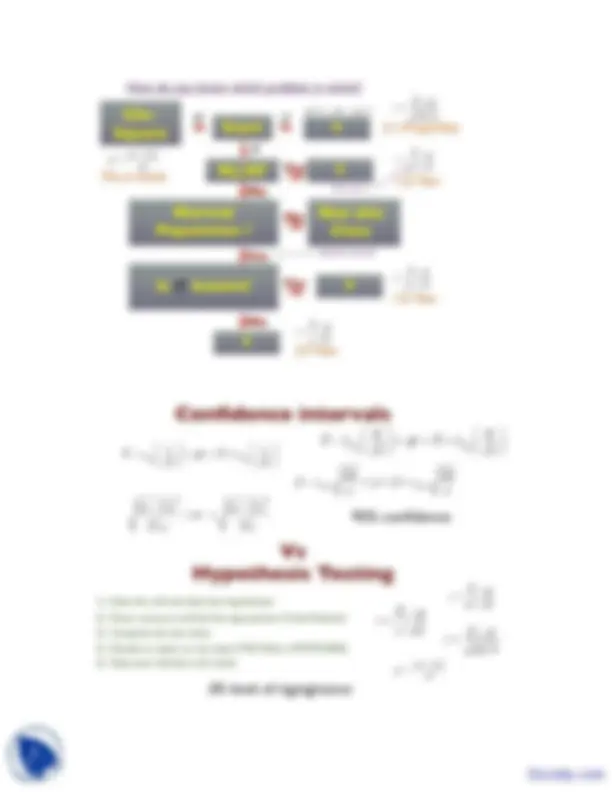


Study with the several resources on Docsity

Earn points by helping other students or get them with a premium plan


Prepare for your exams
Study with the several resources on Docsity

Earn points to download
Earn points by helping other students or get them with a premium plan
Community
Ask the community for help and clear up your study doubts
Discover the best universities in your country according to Docsity users
Free resources
Download our free guides on studying techniques, anxiety management strategies, and thesis advice from Docsity tutors
Hypothesis Testing, Traditional Method, Null hypothesis, Alternative hypothesis, Test values, Statistical test, Critical region, Level of significance, P Values, T distribution are learning points available in this lecture notes.
Typology: Study notes
1 / 17

This page cannot be seen from the preview
Don't miss anything!










Hypothesis Testing State hypothesis Test Conclude from results I. Traditional Method: A hypothesis is a conjecture about a parameter. This conjecture may or may not be true.
More Examples: State H 1 and Ho
The critical region (rejection region) is the range of test values that are extreme enough to reject the null hypothesis. The critical value (C.V.) separates it from the non-critical region. The size of this region depends on how sure we want to be. We use the same notation as confidence intervals. The two tailed test being the exact same scenario as zα/. The level of significance α is the maximum probability of Incorrectly rejecting H 0.
Example: CHOMP reports that the average cost of rehabilitation for stroke victims is $24,672. A sample of 35 stroke victims at Salinas Valley Memorial yields an average cost of rehabilitation as $25,226 with a standard deviation of $3251. With a level of significance of 0.01 can it be concluded that there is a difference in the average costs for stroke victims between the two hospitals.
Describing the p-value is tricky: IF you assume that H 0 is true, THEN the p-value is the probability of attaining a sample/test value as extreme or more extreme than the one you got. So we reject H 0 when the p-value for a test is small A p-value of 3% for example: p = 0. IF the null hypothesis is true THEN there is only a 3% chance of attaining the test statistic that we got. Thats not much of a chance. We are about 97% sure of the null being incorrect. At 90% we would reject At 95% we would reject At 99% we would not reject Note: α^ =^ .10 0.03 < 0.10 reject α = .05 0.03 < 0.05 reject α = .01 0.03 > 0.01 reject
Example: A researcher claims the average wind speed in a certain city is 8 mph. A sample taken on 32 different days shows an average wind speed of 8.2mph. The population standard deviation is 0.6mph. Is there enough evidence to reject the clam at .05 level of significance. Use the P-Value method. Example: A transportation manager claims the average stopping distance for a bus going 60mph is more than 283 feet. A sample of 23 busses is tested and they had an average stopping distance of 284.7 feet. The standard deviation of the population is 3 feet. Assume the variable is normally distributed. At a significance of .01, is there enough evidence to support the claim?
The t-distribution and your calculator:
Example: A physician claims that a jogger’s maximal volume uptake is greater than the average adult. A sample of 15 joggers has a mean of 40.6 ml/kg with a standard deviation of 6.0. If the average of all adults is 36.7 ml/kg then is there enough evidence at .05 level of significance to support the physician’s claim? The z test for a proportion _
IV. The Chi-Square test for a proportion _ Example: A teacher wants to see if the variation of the test scores of her class ( students) is less than that of the population. The variance of the class is 198. The population variance is 225. Is there enough evidence to support the claim that the variance of the class is lass than the population with level of significance 0.05? Assume the scores are normally distributed.
Example: A manufacturer of cigarettes wants to test the claim that the variance of the amount of nicotine in their cigarettes is 0.644. A sample of 20 cigarettes has a standard deviation of 0.97. With level of significance of .05 is there enough evidence to reject the claim? (assume normal)
Example: A teacher wants to see if the variation of the test scores of her class ( students) is less than that of the population. The variance of the class is 197. The population variance is 225. Is there enough evidence to support the claim that the variance of the class is less than the population with level of significance 0.10? Assume the scores are normally distributed. Find the 90% confidence interval and compare your results.
Example(all calculator): A researcher claims that pigs fed on a certain diet will have an average weight of 200 pounds. A sample of 10 pigs has an average weight of 198. pounds and a standard deviation of 3.3 pounds. With 0.10 level of significance, can the claim be rejected? (Use the p-value method) Find the 90% confidence interval and compare your results.